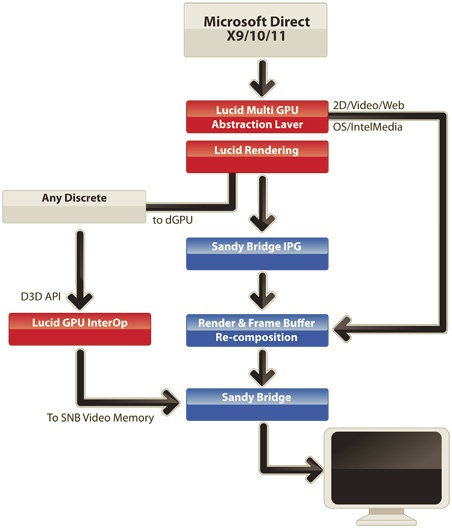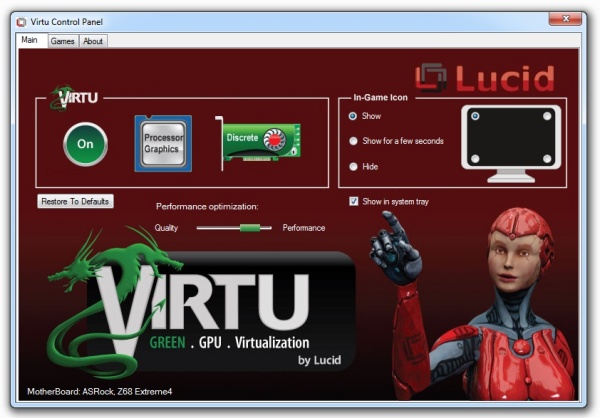Lucid Virtu GPU virtualization
Lucid's Virtu software GPU virtualization technology supports dynamic switching between a dedicated video card and Sandy Bridge's integrated graphics. The switch doesn't require a reboot and it occurs based on which application is using the graphics subsystem at the same time. It's designed to work with all second-generation i3/i5/i7 processors and automatically picks one of the GPUs for a specific job.

The software can assign tasks in real time to the best available graphics resource based on power, performance and features, with no need for additional hardware. If it detects that you're trying to run a demanding DirectX 11 game, it'll whip out the big guns. If it thinks you can get by with the integrated graphics, your discrete GPU automatically idles, decreasing noise, heat and power levels.
You might recall that we reviewed the Asus Crosshair IV Extreme motherboard with Lucid's HydraLogix technology, which is designed to let you mix and match graphics cards from both AMD and Nvidia, including cards from entirely different graphics generations. While we appreciated the concept behind HydraLogix – and still do – we discovered that it simply didn't work as advertised.

We're pleased to report that Virtu is a hell of a lot more straightforward than HydraLogix and it seems to work pretty well, smoothly switching between our Radeon HD 6970 and Sandy Bridge's graphics. The software has two settings: i-Mode and d-Mode. The former requires your monitor to be wired to the motherboard (the Sandy Bridge graphics engine) and offers nearly zero overhead.
Conversely, Virtu's d-Mode lets you connect your display directly to a graphics card, but the Sandy Bridge graphics engine is always powered on, whereas it can be powered off in the i-Mode. That sacrifice will be worthwhile for some enthusiasts, as d-Mode's main advantage is that it allows you to use multi-GPU technology such as CrossfireX and SLI, while this isn't possible with the i-Mode.